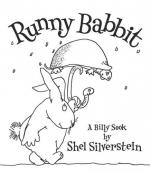V
Before he followed his wife, Babbitt stood at the westernmost window of their room. This residential settlement, Floral Heights, was on a rise; and though the center of the city was three miles away—Zenith had between three and four hundred thousand inhabitants now—he could see the top of the Second National Tower, an Indiana limestone building of thirty-five stories.
Its shining walls rose against April sky to a simple cornice like a streak of white fire. Integrity was in the tower, and decision. It bore its strength lightly as a tall soldier. As Babbitt stared, the nervousness was soothed from his face, his slack chin lifted in reverence. All he articulated was “That’s one lovely sight!” but he was inspired by the rhythm of the city; his love of it renewed. He beheld the tower as a temple-spire of the religion of business, a faith passionate, exalted, surpassing common men; and as he clumped down to breakfast he whistled the ballad “Oh, by gee, by gosh, by jingo” as though it were a hymn melancholy and noble.
CHAPTER II
Relieved of Babbitt’s bumbling and the soft grunts with which his wife expressed the sympathy she was too experienced to feel and much too experienced not to show, their bedroom settled instantly into impersonality.
It gave on the sleeping-porch. It served both of them as dressing-room, and on the coldest nights Babbitt luxuriously gave up the duty of being manly and retreated to the bed inside, to curl his toes in the warmth and laugh at the January gale.
The room displayed a modest and pleasant color-scheme, after one of the best standard designs of the decorator who “did the interiors” for most of the speculative-builders’ houses in Zenith. The walls were gray, the woodwork white, the rug a serene blue; and very much like mahogany was the furniture—the bureau with its great clear mirror, Mrs. Babbitt’s dressing-table with toilet-articles of almost solid silver, the plain twin beds, between them a small table holding a standard electric bedside lamp, a glass for water, and a standard bedside book with colored illustrations—what particular book it was cannot be ascertained, since no one had ever opened it. The mattresses were firm but not hard, triumphant modern mattresses which had cost a great deal of money; the hot-water radiator was of exactly the proper scientific surface for the cubic contents of the room. The windows were large and easily opened, with the best catches and cords, and Holland roller-shades guaranteed not to crack. It was a masterpiece among bedrooms, right out of Cheerful Modern Houses for Medium Incomes. Only it had nothing to do with the Babbitts, nor with any one else. If people had ever lived and loved here, read thrillers at midnight and lain in beautiful indolence on a Sunday morning, there were no signs of it. It had the air of being a very good room in a very good hotel. One expected the chambermaid to come in and make it ready for people who would stay but one night, go without looking back, and never think of it again.




